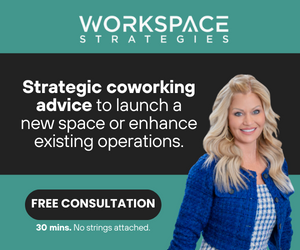Contagion and similar disaster movies notwithstanding, the spread of microbes is not always a bad thing, a leading researcher told an audience of designers and architects last month at Neocon, a premier trade show for the commercial interiors industry.
While previous teachings focused on keeping microorganisms out of the indoor environment, assuming all bacteria, viruses and fungi were pollutants, Jessica Green–Founding Director of the Biology and The Built Environment (BioBE) Center–explained that today’s scientific research shows that the spread of some microorganisms can be quite beneficial.
The takeaway lesson? Architects, designers, engineers, and facility managers should look at design solutions to attract healthy microbes into their built environment; or, in your case, into your workspace.
The Body Needs Microbes
“We’ve learned that the human body is largely microbial,” Green said, due to the advent of increasingly accessible microbiome data.
“The microbes that are in your gut, on your skin, in your mouth, are critical to your health and well-being. We now know that the microbes in and on you are really important for things like metabolizing your food. You would be dead if you didn’t have your microbial symbionts.”
“We know that microbes on your body can protect you from getting infections. If you get colonized by a microbe that’s pathogenic and you have the right set of bacteria in and on your body, you won’t get sick,” she said, relating her personal tale of getting sick in Mexico.
“I think that just as our perception that it’s not good to take antibiotics unless you absolutely have to, our understanding of what we’re being exposed to in the indoor environment is going to shift as well,” she said, citing research showing that mice exposed to dog dust have a much stronger immune system, and would not get sick when exposed infectious agents.
Building as Ecosystem
Green presented her findings as some of the first lines of evidence in DNA sequencing technology to demonstrate the influence designers, architects, and engineers have on indoor microbial cities.
Design of the indoor environment and environmental conditions drive whether microbes thrive and survive indoors.
“Given that we spend 90 percent of our time in the built environment, and superbugs can thrive in the indoor environment, buildings (and the workplace) are an important source of exposure,” Dr. Green emphasized.
Microbes can enter in any number of pathways: through windows or ventilation, pets, people, water and plants, Dr. Green noted. “Every time someone enters a room, they bring their own microbial cloud and leave some of it behind for the next audience.”
Factors in an indoor environment can influence the microbiology, such as a warm, moist bathroom versus a cold and dry office. The types of flooring and materials used all ultimately influence what microbes are attracted into the indoor environment.
Green’s research showed ventilation, one factor controlled by engineers and designers, has major impact on microbes in the spaces. By discovering differences in microbial communities in studies with recirculated building air versus 100% outdoor air with no filters, her team learned that the way air is circulated in buildings is having a very strong impact on what microbes are there.
Green shared some research she did with a Fortune 50 company on whether workspace design impacted the indoor microbiome, which can potentially have a significant impact on worker health and productivity. Her team found that different communities and spaces have varying kinds of microbes.
“Desks that are side by side in an open office floor plan have very similar bacterial communities, and they’re just as similar as desks way on the other side of the building. This could be because of air circulating in a space like that, or it could be because people on the same floor tend to be interacting with one another and going to one another’s desk more frequently.” In the process, they shed their microbes and share them.
“From this, it’s really obvious that we’ve known for a long time that indoor microbiology is important to human health. If you focus just on this piece of the network where microbiome sequencing is being used, that’s where we’ve learned that designers are having a big impact on indoor microbiology.”
Rather than trying to keep microbes out of the indoor environment, designers need to design indoor environments and workspaces that promote the growth of beneficial microbes and inhibit harmful ones.

 Dr. Gleb Tsipursky – The Office Whisperer
Dr. Gleb Tsipursky – The Office Whisperer Cat Johnson – Coworking Marketing Maven
Cat Johnson – Coworking Marketing Maven Angela Howard – Culture Expert
Angela Howard – Culture Expert Drew Jones – Design & Innovation
Drew Jones – Design & Innovation Andrea Pirrotti-Dranchak – Competitive Advantage
Andrea Pirrotti-Dranchak – Competitive Advantage Jonathan Price – CRE & Flex Expert
Jonathan Price – CRE & Flex Expert Jeremy Fennema – Tech Innovation Alchemist
Jeremy Fennema – Tech Innovation Alchemist







